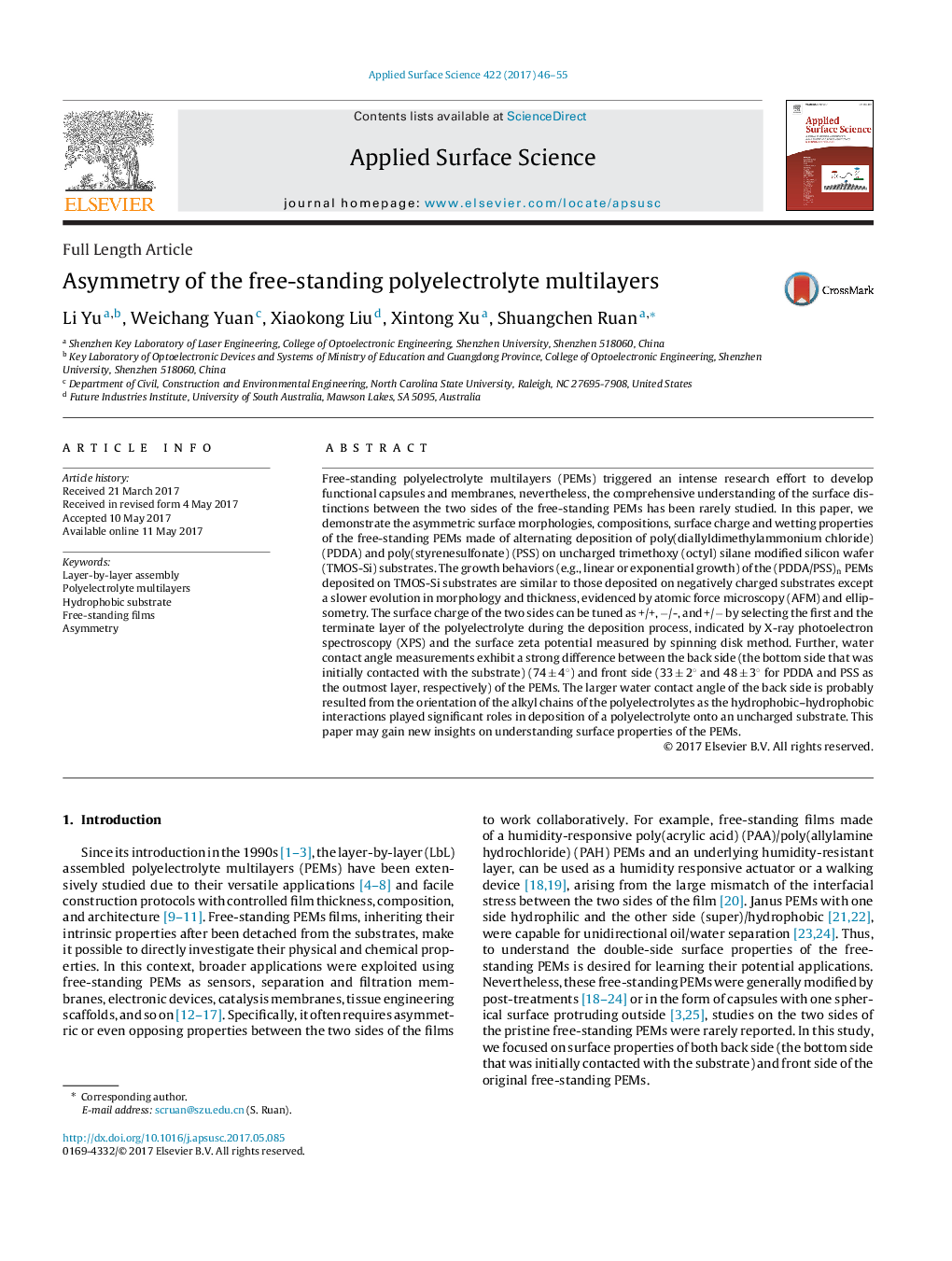| Article ID | Journal | Published Year | Pages | File Type |
|---|---|---|---|---|
| 5347517 | Applied Surface Science | 2017 | 10 Pages |
Abstract
Free-standing polyelectrolyte multilayers (PEMs) triggered an intense research effort to develop functional capsules and membranes, nevertheless, the comprehensive understanding of the surface distinctions between the two sides of the free-standing PEMs has been rarely studied. In this paper, we demonstrate the asymmetric surface morphologies, compositions, surface charge and wetting properties of the free-standing PEMs made of alternating deposition of poly(diallyldimethylammonium chloride) (PDDA) and poly(styrenesulfonate) (PSS) on uncharged trimethoxy (octyl) silane modified silicon wafer (TMOS-Si) substrates. The growth behaviors (e.g., linear or exponential growth) of the (PDDA/PSS)n PEMs deposited on TMOS-Si substrates are similar to those deposited on negatively charged substrates except a slower evolution in morphology and thickness, evidenced by atomic force microscopy (AFM) and ellipsometry. The surface charge of the two sides can be tuned as +/+, â/-, and +/â by selecting the first and the terminate layer of the polyelectrolyte during the deposition process, indicated by X-ray photoelectron spectroscopy (XPS) and the surface zeta potential measured by spinning disk method. Further, water contact angle measurements exhibit a strong difference between the back side (the bottom side that was initially contacted with the substrate) (74 ± 4°) and front side (33 ± 2° and 48 ± 3° for PDDA and PSS as the outmost layer, respectively) of the PEMs. The larger water contact angle of the back side is probably resulted from the orientation of the alkyl chains of the polyelectrolytes as the hydrophobic-hydrophobic interactions played significant roles in deposition of a polyelectrolyte onto an uncharged substrate. This paper may gain new insights on understanding surface properties of the PEMs.
Keywords
Related Topics
Physical Sciences and Engineering
Chemistry
Physical and Theoretical Chemistry
Authors
Li Yu, Weichang Yuan, Xiaokong Liu, Xintong Xu, Shuangchen Ruan,
